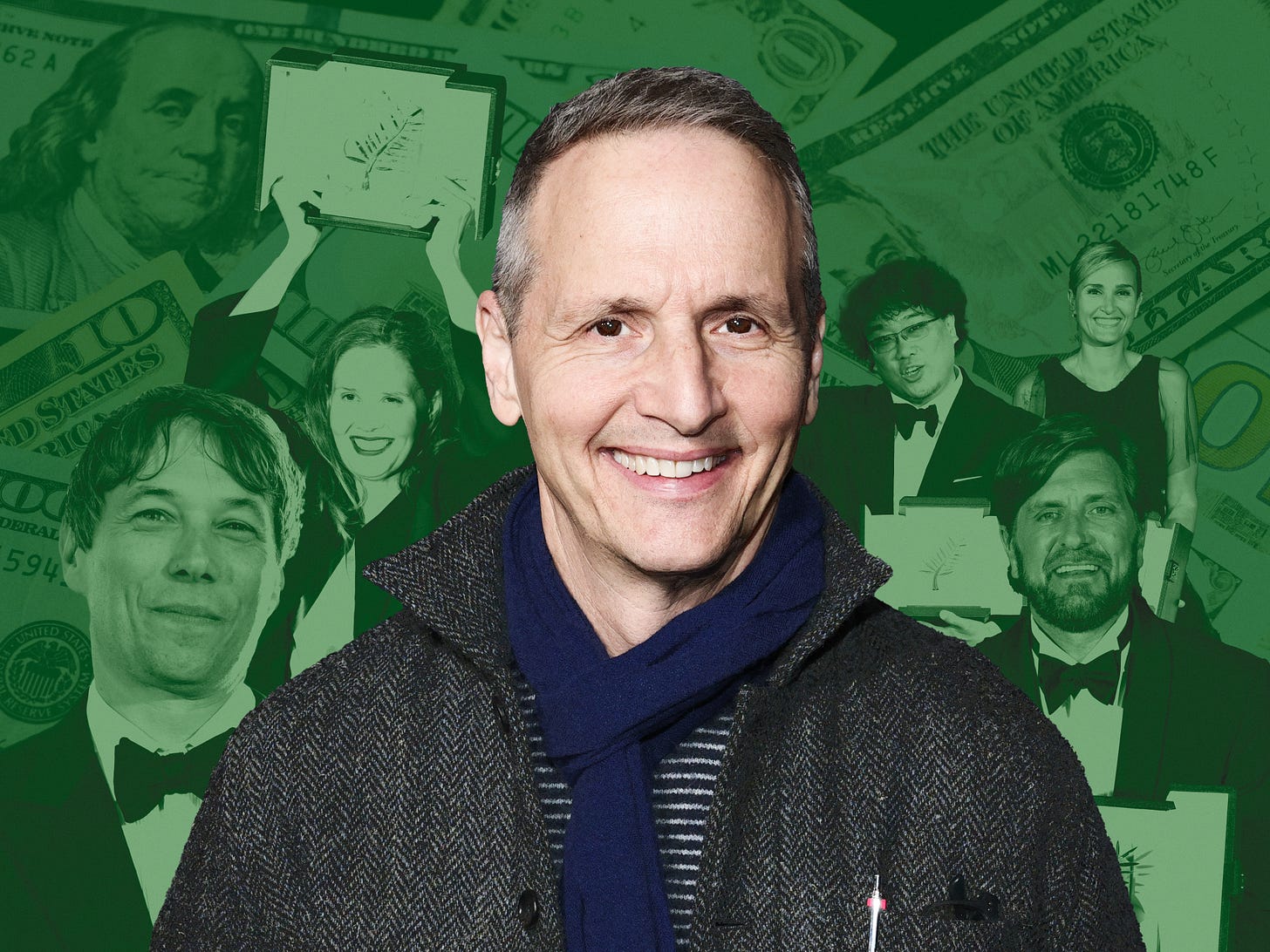CEO Tom Quinn: How I Built Neon (and Why You Can Too)
Two best pictures ('Anora', 'Parasite'), 5 Palme d'Ors: The star exec opens his playbook — budgets, creative vision, strategy and the 'lazy' hysteria over that $18M marketing spend

Ashley Cullins writes for paid subscribers. She recently covered dealmakers’ endorsement decisions for clients, cash, sweat equity or going for the mega exit; the art of getting an original film greenlight in 2025; and how to sell an indie film now. You can reach her at ashley@theankler.com
This part of the Neon story you know: Anora’s Oscar domination. Acquiring five Palme d’Or winners in a row. Establishing itself as an indie horror player with Longlegs and The Monkey. Raising another $200 million credit facility last November.
What you don’t know is how Neon got here and how cofounder and CEO Tom Quinn runs the business to have this kind of outsize success in less than eight years. (Quinn started the company in 2017 with Alamo Drafthouse cofounder Tim League.) For anyone who believes there isn’t opportunity in Hollywood, Quinn is a stark retort. His strategy for building Neon contains the seeds for anyone daring enough to start something in 2025 as well as any dealmakers acquiring films — and, notably, he wants people to replicate Neon’s success.
“If we stick to a very clear mantra of who we are and what we want to represent, we will be successful in the aggregate,” Quinn says. “Those things that are important to us are very clear: auteur-driven films that have purpose, something to say. Cultural heft, in some cases social impact, but also artistic merit in equal measure. Those things cannot exist without one another. If you pursue these uncompromisingly, then this is a sustainable idea in a very volatile industry.”
I asked Quinn about how Neon differentiates itself in trying to acquire a movie, and he says, “When we come to pitch for a movie, you know exactly what’s going to happen to this film. It’s going to be treated respectfully and given the best, longest possible theatrical release that we can deliver. For most filmmakers, that is extremely important. Even when there’s more money being offered from other companies, whether it’s streamers or studios, we always stand a really good betting chance to win out.”
When we chatted, the 30-year industry veteran who led acquisition efforts for Samuel Goldwyn Film and Magnolia Pictures before starting Neon was in an ebullient mood, with The Monkey approaching $50 million in worldwide box office after five weekends and Anora enjoying its post-Oscar bump.
In our conversation, which took place on Mar. 12, Quinn delivered expert insight for dealmakers and company builders on focus, discipline, vision and growth — with particular acumen for creating an economic model for getting as many projects as possible into the black in its first window.
In this newsletter, Quinn will tell you:
The truth behind Anora’s marketing budget
How he defines Neon as a brand
The ideal company size to support the kind of films Neon wants to do
Where Quinn plans to deploy his fresh capital — including internationally
Why his commitment to theatrical is fundamental to Neon’s success
The idea his financial backers needed the most convincing on
Where the market undervalues films — and how he’s exploited it
The importance of “cultural heft” when picking movies
Why the Palme d’Or matters more than any other filmmaking award
The surprising genre he loves most and plans to pursue
Why every film doesn’t need to be profitable



